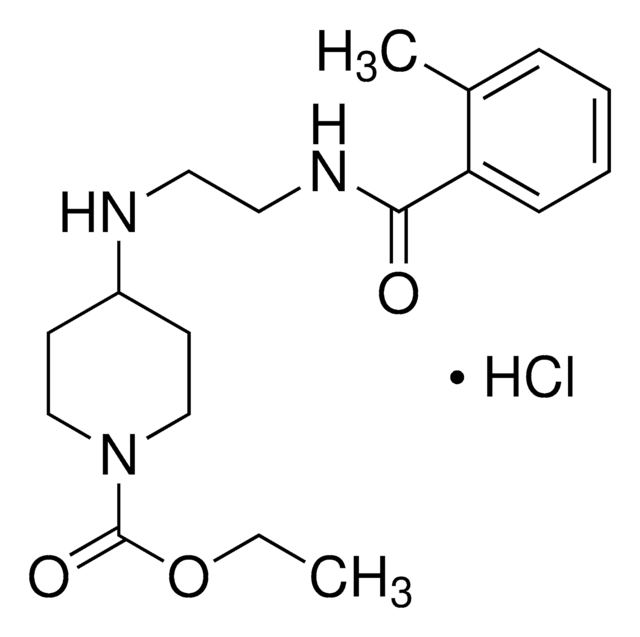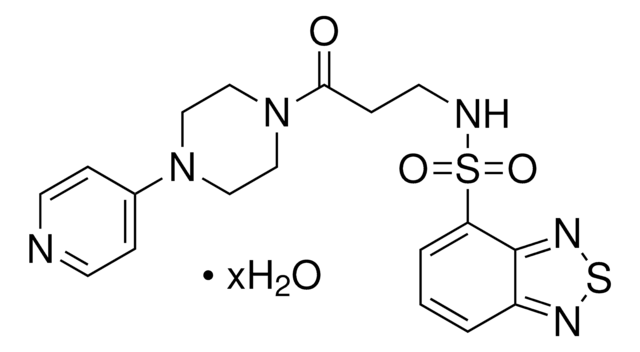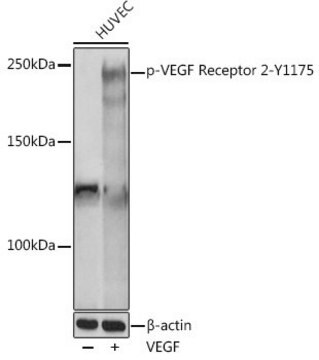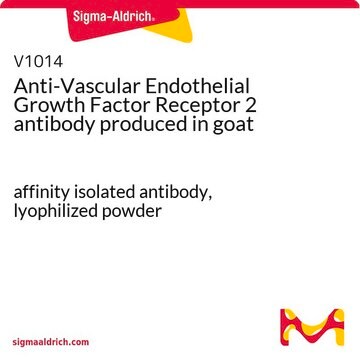V5015
VU0152100
≥98% (HPLC)
Sinônimo(s):
3-Amino-N-[(4-methoxyphenyl)methyl]-4,6-dimethyl-thieno[2,3-b]pyridine-2-carboxamide
About This Item
Produtos recomendados
Ensaio
≥98% (HPLC)
forma
powder
solubilidade
DMSO: >50 mg/mL
temperatura de armazenamento
2-8°C
cadeia de caracteres SMILES
COc1ccc(CNC(=O)c2sc3nc(C)cc(C)c3c2N)cc1
InChI
1S/C18H19N3O2S/c1-10-8-11(2)21-18-14(10)15(19)16(24-18)17(22)20-9-12-4-6-13(23-3)7-5-12/h4-8H,9,19H2,1-3H3,(H,20,22)
chave InChI
MDNWGCQSCGNTKH-UHFFFAOYSA-N
Ações bioquímicas/fisiológicas
Características e benefícios
Palavra indicadora
Danger
Frases de perigo
Declarações de precaução
Classificações de perigo
Acute Tox. 3 Oral - Eye Irrit. 2
Código de classe de armazenamento
6.1C - Combustible acute toxic Cat.3 / toxic compounds or compounds which causing chronic effects
Classe de risco de água (WGK)
WGK 3
Ponto de fulgor (°F)
Not applicable
Ponto de fulgor (°C)
Not applicable
Certificados de análise (COA)
Busque Certificados de análise (COA) digitando o Número do Lote do produto. Os números de lote e remessa podem ser encontrados no rótulo de um produto após a palavra “Lot” ou “Batch”.
Já possui este produto?
Encontre a documentação dos produtos que você adquiriu recentemente na biblioteca de documentos.
Artigos
Muscarinic acetylcholine receptors mediate acetylcholine actions in CNS and non-nervous tissues, crucial for cell signaling.
DISCOVER Bioactive Small Molecules for Neuroscience
Nossa equipe de cientistas tem experiência em todas as áreas de pesquisa, incluindo Life Sciences, ciência de materiais, síntese química, cromatografia, química analítica e muitas outras.
Entre em contato com a assistência técnica









